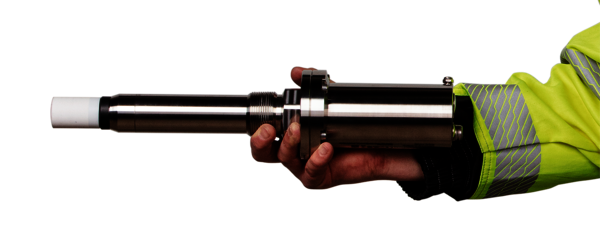At the last World Biogas Expo & Summit, biotransformation was the central theme, i.e. the complete abandonment of fossil fuels and other petroleum derivatives. Biogas and biomethane (gas from renewable sources) are central to this transformation and are emerging as new mainstays of energy production in many economies around the world.
The award-winning MGP262
A highlight of the Expo & Summit were the AD & Biogas Industry Awards. Our groundbreaking MGP262 biomethane exhaust instrument was awarded the Highly Commended rating in the Research & Innovation category. For the second time in a row, our instruments were awarded at the WBE - this year among participants from over 30 countries.
Irene Zakrzewski, Vaisala R&D Project Manager, accepted the award and thanked the jury, saying, “The award for our innovation resonates with Vaisala, a company founded with the purpose of pushing the boundaries of the in to postpone the measurement technology possible. It is an honor for me to accept this award on behalf of the entire team. Thank you and I want to assure you that we will come back with more innovations!”
As product manager, Antti Heikkilä continues: “Such recognition by competitors is very special and underlines what our customers and partners are saying. In day-to-day operations, they use our sensors to create renewable alternatives to fossil fuels to minimize emissions of greenhouse gases into the atmosphere.” But the real benefit is that we are literally helping to turn waste into profit. And at the same time, in view of the volatile and problematic global supply situation, we ensure the supply of gas for energy production and heat generation.
MGP262: Development of an excellent solution
The MGP262 is in continuity with Vaisala's mission to solve one of the major problems in the production of renewable, non-fossil gas: inefficiency. Put simply, renewable energy must be produced profitably in order for it to be used on a large scale. Inefficiencies must be minimized from an ecological as well as an economic point of view. And that is exactly what Vaisala's biogas team is focusing on. Now that the MGP261 3-in-1 multigas probe for use in raw biogas has proven to be a truly market-changing product, Vaisala's R&D team is turning their focus to the next level in biogas: Biomethane/RNG.


In the beginning, the challenges of measuring methane in low concentrations and carbon dioxide in high concentrations in the exhaust gas streams of biogas upgrading plants were particularly relevant. But since the team had already developed an in situ optical instrument for monitoring biogas production, they were convinced of the feasibility. After several investigations, feasibility studies and pilot installations at customers, the project could be realized surprisingly quickly. In addition, the design and engineering teams managed to fix the problem while maintaining the form factor.
"When we were developing the MGP261, we asked ourselves: »How would you like a small, portable instrument instead of a huge closet?" The answer was and is obvious," explains Antti Heikkilä.
"The compact design of the MGP series makes it easy to install in tight spaces, reduces power consumption and has other advantages. In a biomethane plant, this simplifies operation considerably. Instead of bulky cabinets and reference gases, the MGP provides a comprehensive in situ solution that fits in the palm of your hand. And that's exactly what our customers want,” concludes Otto Tierto, Vaisala's project manager responsible for R&D for the MGP262.
Vaisala MGP262 – no more throwing money down the drain
With the MGP262, your biomethane/RNG production runs efficiently - i.e. profitably and environmentally friendly. With the MGP262, you can minimize the amount of methane released into the atmosphere during processing. Minimizing methane loss is of critical importance to the environment, as methane is an extremely climate-impacting greenhouse gas. At the same time, profitability is increased because more high-quality biomethane can be sold.
The MGP262 was introduced in January 2021. In just over two years, it was able to be sold in large numbers worldwide. In the future, too, their importance will increase wherever biomethane/RNG is produced.